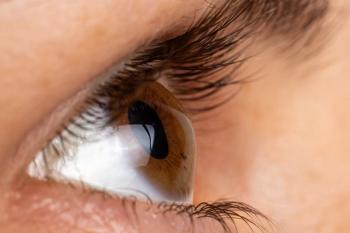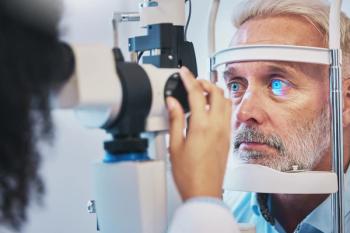
Researchers find increased depression risk in patients with hyperopia
According to the UK study, for every 0.5-diopter increase in mean spherical equivalent, a 6% higher risk was attributed in developing depressive disorders.
A team of researchers based in the UK have found a suggested correlation between the presence of hyperopia and an increased risk of depressive disorders by utilizing accelerometer data. The study found that a higher mean spherical equivalent (MSE) was also associated with an increased risk, with every 0.5-diopter increase in MSE attributing for a 6% higher risk of developing depressive disorders (odds ratio, 1.06; 95% CI, 1.02–1.11; P = 0.007).1
The study authors also investigated 4 daily behaviors, including moderate to vigorous intensity physical activity, light physical activity, sedentary, and sleep to evaluate the effects of physical activity and sleep in relation to the correlation between MSE and depressive disorders risk. These behaviors were recorded between 2013 and 2015 and evaluated amongst 20607 participants with baseline MSE and 7-day accelerometer measurements as documented in the UK Biobank. 1
Mediation analysis showed that moderate to vigorous exercise and sleep partially mediated the relationship between MSE and depressive disorders, with a little over 35% of the association between moderate to high hyperopia and depression mediated by this level of exercise intensity.1
“To date, there has been little work using accelerometer data to examine diurnal behavior patterns among older adults and their interaction between depression and refractive status. We observed that individuals with refractive errors tended to have longer sedentary times, shorter light physical activity times, and shorter sleep times, which conferred a greater depression risk,” the authors stated. “Regarding moderate to vigorous physical activity time, a more pronounced decrease was observed among individuals with hyperopia. Previous studies indicate similar patterns between refractive errors and activity in middle-aged and elderly populations, who typically exhibit lower levels of physical activity and experience sleep disturbances.”
In the UK biobank, refractive error was measured by an RC-5000 device (Tomey) from January 1, 2006 to October 31, 2010, with mean values of spherical power and cylindrical power determined by averaging 10 repeated measurements in both eyes. The MSE was then calculated by adding one-half of the cylinder power to the sphere power and averaged between both eyes. Those with a history of eye conditions that could influence refractive errors including cataracts, injury, or trauma resulting in loss of vision, refractive laser eye surgery, and corneal graft surgery were excluded from the study.1
Additional findings from the study show that increased moderated to vigorous exercise in the morning, afternoon, and evening was protective effect against depressive disorders, while prolonged sleep in the afternoon and early evening was associated with the development of depressive disorders. Nighttime sleep, however, showed an associated 12% decrease in the risk of depressive disorders.1
“Moderate to vigorous physical activity and sleep duration played significant roles in the relationship between refractive errors and depression, and understandably may be limited by vision disturbances,” the authors stated. “Future interventions to restore normal vision while also targeting moderate to vigorous physical activity and normal sleeping patterns may cater more holistically toward an aging population to decrease the risk and burden of depression.”
Reference:
Du Z, Wang S, Bulloch G, Zhang F, Wang Y, Lai C, et al. Accelerometer-measured daily behaviors that mediate the association between refractive status and depressive disorders. Trans Vis Sci & Tech. 2024;13(3). doi:
https://doi.org/10.1167/tvst.13.7.3
Newsletter
Want more insights like this? Subscribe to Optometry Times and get clinical pearls and practice tips delivered straight to your inbox.













































